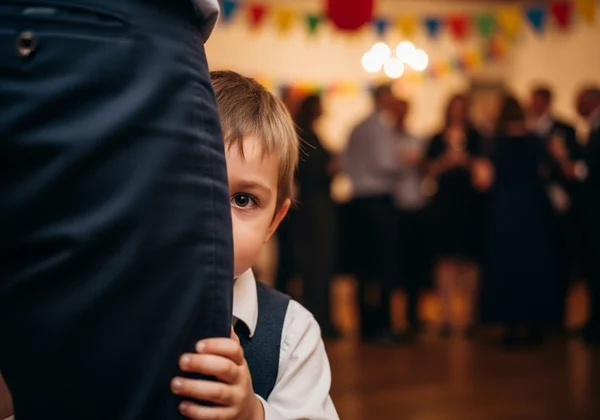Avoidant Personality Disorder (AVPD) Test: Understanding the Roots of Avoidance & Development
Have you ever felt a profound sense of social apprehension, wondering where these feelings truly began? This deep-seated fear of judgment and rejection can feel isolating, making you question your own history. Many people who struggle with these feelings find themselves asking, how do you know if you have avoidant personality disorder? This article journeys into the developmental origins of Avoidant Personality Disorder (AVPD), exploring how early experiences can shape a life of social avoidance.
Grasping these developmental roots can offer profound clarity on your own patterns. This understanding is a vital first step toward navigating your experiences with greater self-awareness. If this exploration resonates with you, a confidential avpd test can be a valuable next step. Discovering the "why" behind your feelings can illuminate the path forward, and an initial assessment like our confidential online AVPD test can provide a safe starting point.

The Earliest Seeds: What Causes AVPD in Childhood?
The foundations of our personality are laid in our earliest years. For individuals who develop AVPD, childhood is often marked by experiences that teach them the world is a critical and unsafe place. These formative events don't have to be overtly traumatic; often, it's the subtle, consistent patterns that leave the deepest impact. Exploring these early seeds is crucial for understanding the core sensitivities that define AVPD.
Understanding your past is not about placing blame but about gaining insight. It helps connect the dots between what happened then and how you feel now. Many find that recognizing these patterns is the first time their persistent feelings of inadequacy and fear make sense. For those looking to see if these factors apply to them, a free AVPD assessment can offer personalized insights.
The Lingering Echoes of Emotional Neglect and Harsh Criticism
Imagine a child who consistently tries to share their excitement or worries, only to be met with indifference, dismissal, or sharp criticism. This is the landscape of emotional neglect. It's not about the absence of food or shelter, but the absence of emotional validation and support. The child learns a painful lesson: "My feelings don't matter," or worse, "My feelings are wrong."
When this is paired with harsh criticism, the damage is compounded. A child who is constantly told they aren't smart enough, athletic enough, or quiet enough internalizes these messages as facts. They develop a core belief of being fundamentally flawed. This creates a deep-seated fear of being "found out," leading them to avoid situations where they might be judged or criticized, a hallmark of avoidant personality traits.

Inherited Temperament: The Role of Innate Shyness and Inhibition
While environment plays a massive role, we can't ignore biology. Some individuals are born with a more sensitive or inhibited temperament. This is often described as behavioral inhibition—a natural tendency to be shy, cautious, and emotionally reserved, especially in new situations or around unfamiliar people. This isn't a flaw; it's a natural variation in personality.
However, when a child with this innate temperament is raised in a critical or unsupportive environment, their natural caution can morph into pervasive fear. Their inherent shyness is not nurtured with gentle encouragement but is instead met with frustration or ridicule, reinforcing their belief that there is something wrong with them. This combination of nature and nurture can create a powerful predisposition for developing the deep-seated avoidance seen in AVPD.

Unfolding Avoidance: Signs of AVPD in Teenagers and Adolescents
Adolescence is a social gauntlet. It's a time when peer acceptance feels paramount, and every social interaction is scrutinized. For a teenager with underlying vulnerabilities, this period can be where avoidant patterns become deeply entrenched. The stakes feel higher, and the fear of rejection can become paralyzing, turning typical teenage awkwardness into a significant barrier to development.
This is often the stage where the line between shyness and a more serious struggle becomes clearer. Friends, hobbies, and romantic interests are central to teenage life, but for someone developing AVPD, these are minefields of potential humiliation. If you're wondering whether your past struggles were more than just shyness, you can start your self-assessment to gain more clarity.
When "Just Shy" Becomes a Deep-Seated Social Struggle
Many teens are shy, but there's a crucial difference between shyness and the signs of AVPD. A shy person might feel nervous about going to a party but will likely go and may even warm up over time. Someone with developing AVPD traits feels an overwhelming dread. They may actively invent excuses to avoid the party altogether because the perceived risk of saying or doing the wrong thing is too great.
This avoidance isn't limited to big events. It can manifest in not raising their hand in class, avoiding the lunchroom, or having no close friends despite a deep longing for connection. While others are learning vital social skills through trial and error, the avoidant teen is on the sidelines, their social world shrinking as their fear grows.
The Impact of Peer Rejection and Social Isolation in Formative Years
For a teen already sensitive to criticism, actual experiences of bullying or peer rejection can be devastating. These events serve as concrete "proof" that their worst fears are true: they are unlikeable and will be rejected if they show their true selves. This can trigger a vicious cycle. The teen withdraws to protect themselves from more hurt, but this isolation makes them an easier target and prevents them from forming supportive friendships that could buffer the pain.
This social isolation starves them of positive reinforcement and the opportunity to build social confidence. They miss out on the shared experiences that build bonds and self-esteem. Over time, the avoidance becomes a reflex, a deeply learned coping mechanism that persists long after the initial triggers are gone.

Connecting the Dots: Avoidant Attachment and Adult AVPD Traits
Our earliest relationships with caregivers create a blueprint for how we connect with others throughout our lives. This blueprint is known as an attachment style. When caregivers are consistently unavailable, unresponsive, or rejecting, a child may develop an avoidant attachment style as a defense mechanism. They learn early on that relying on others leads to disappointment and pain.
This early relational trauma is a powerful predictor of adult relationship difficulties, including the patterns seen in AVPD. The strategies learned in infancy to cope with an unreliable caregiver become the same strategies used in adult friendships and romantic partnerships. If these patterns feel familiar, an online AVPD test can help you explore them in a structured way.
From Early Bonds to Present Relationships: A Consistent Thread
An individual with an avoidant attachment style often grows into an adult who is fiercely self-reliant. They crave intimacy but are terrified of the vulnerability it requires. They keep partners at arm's length, preemptively end relationships to avoid being left, or avoid deep connections altogether. This isn't because they don't care; it's because the risk of getting close feels emotionally catastrophic.
This pattern is a consistent thread woven from childhood into adulthood. The fear of depending on someone, of being seen and potentially rejected, is a direct echo of those earliest experiences. Recognizing this connection between past and present is a powerful step. For those seeking to understand their relational patterns, a confidential online avpd screening tool can offer a new perspective.

From Understanding Roots to Cultivating Growth: Your Path Forward
Tracing the roots of avoidance from childhood neglect, innate temperament, and adolescent rejection to adult attachment patterns can be an incredibly validating experience. It shows that these profound fears didn't appear out of nowhere; they are learned responses to painful experiences. Recognizing these learned responses is the foundational step towards fostering self-compassion, paving the way for meaningful change.
Recognizing the roots of avoidance is a powerful step towards self-awareness. If these insights resonate with your own life story, taking our free, confidential online AVPD test can provide you with immediate, personalized results. It's a secure and anonymous way to explore your traits further and begin your journey towards greater clarity and well-being.
Your Questions on AVPD Development Answered
What are the key symptoms of AVPD that differ from shyness?
Shyness is discomfort in new social situations, which often fades with familiarity. AVPD, in contrast, involves a pervasive pattern of social inhibition, feelings of inadequacy, and extreme sensitivity to negative evaluation that leads to avoiding social and occupational activities. The fear of rejection is so intense that it significantly impairs one's life.
How do you know if you have avoidant personality disorder based on early experiences?
While no single experience guarantees AVPD, a consistent history of childhood emotional neglect, harsh criticism, peer rejection, or developing an avoidant attachment style are significant risk factors. If you recognize these patterns in your past and see their reflection in your current-day struggles with social avoidance and low self-esteem, it may be worth exploring further with a tool like our confidential AVPD quiz.
Is childhood emotional neglect a guaranteed cause of AVPD?
No, it is not a guaranteed cause, but it is a strong contributing factor. Resilience, a supportive relationship with another adult (like a teacher or grandparent), and innate temperament can all influence outcomes. However, emotional neglect creates a significant vulnerability by teaching a child that their emotional needs are unimportant and that seeking connection is risky.
What triggers an avoidant personality's withdrawal in social situations?
Triggers can be very subtle. They often include any situation that involves potential evaluation or judgment. This could be meeting new people, speaking up in a meeting, receiving a compliment (which can feel like a setup for future failure), or sensing even a hint of disapproval or disinterest from someone else. The core trigger is the perceived threat of being exposed as inadequate.